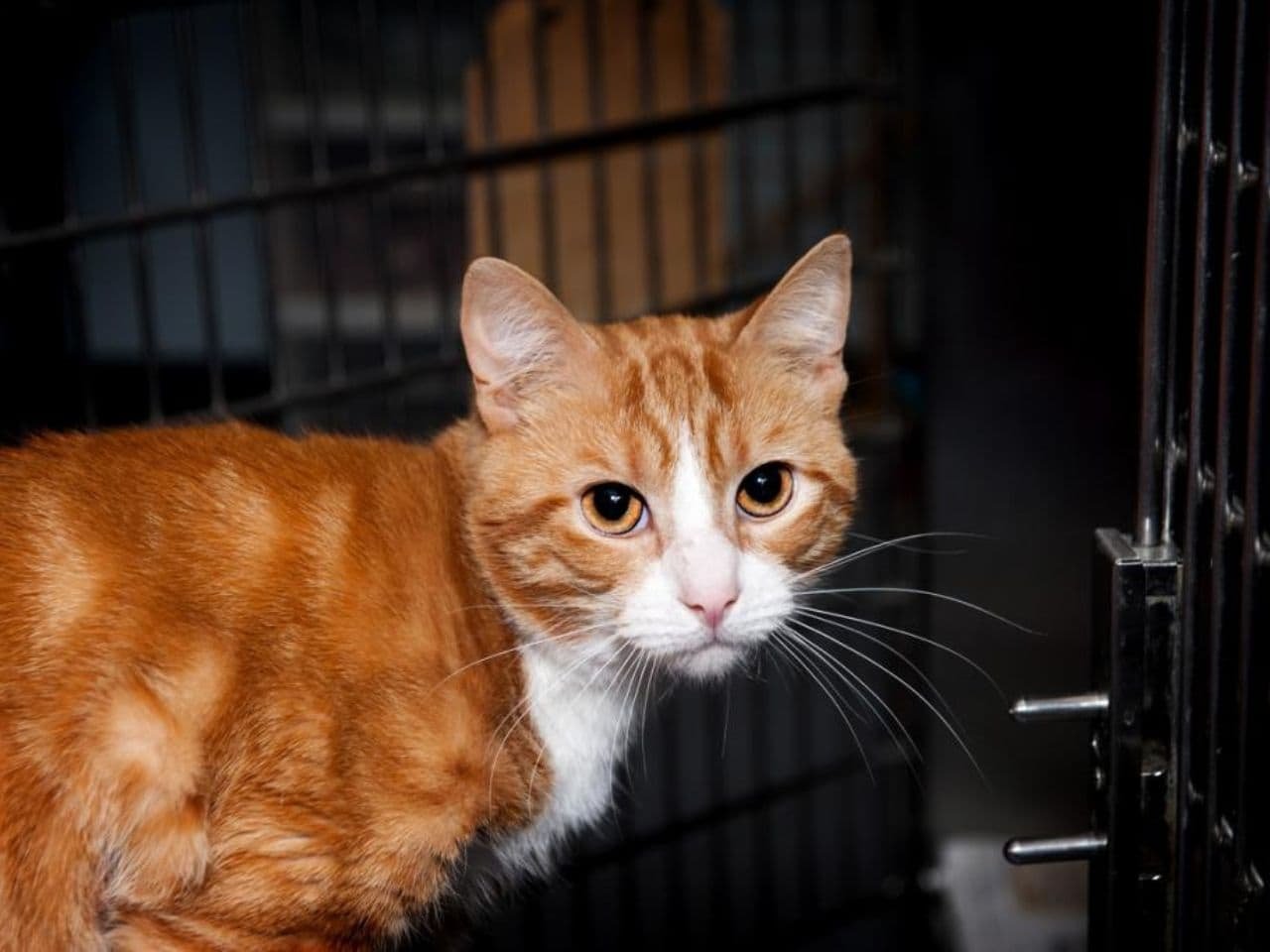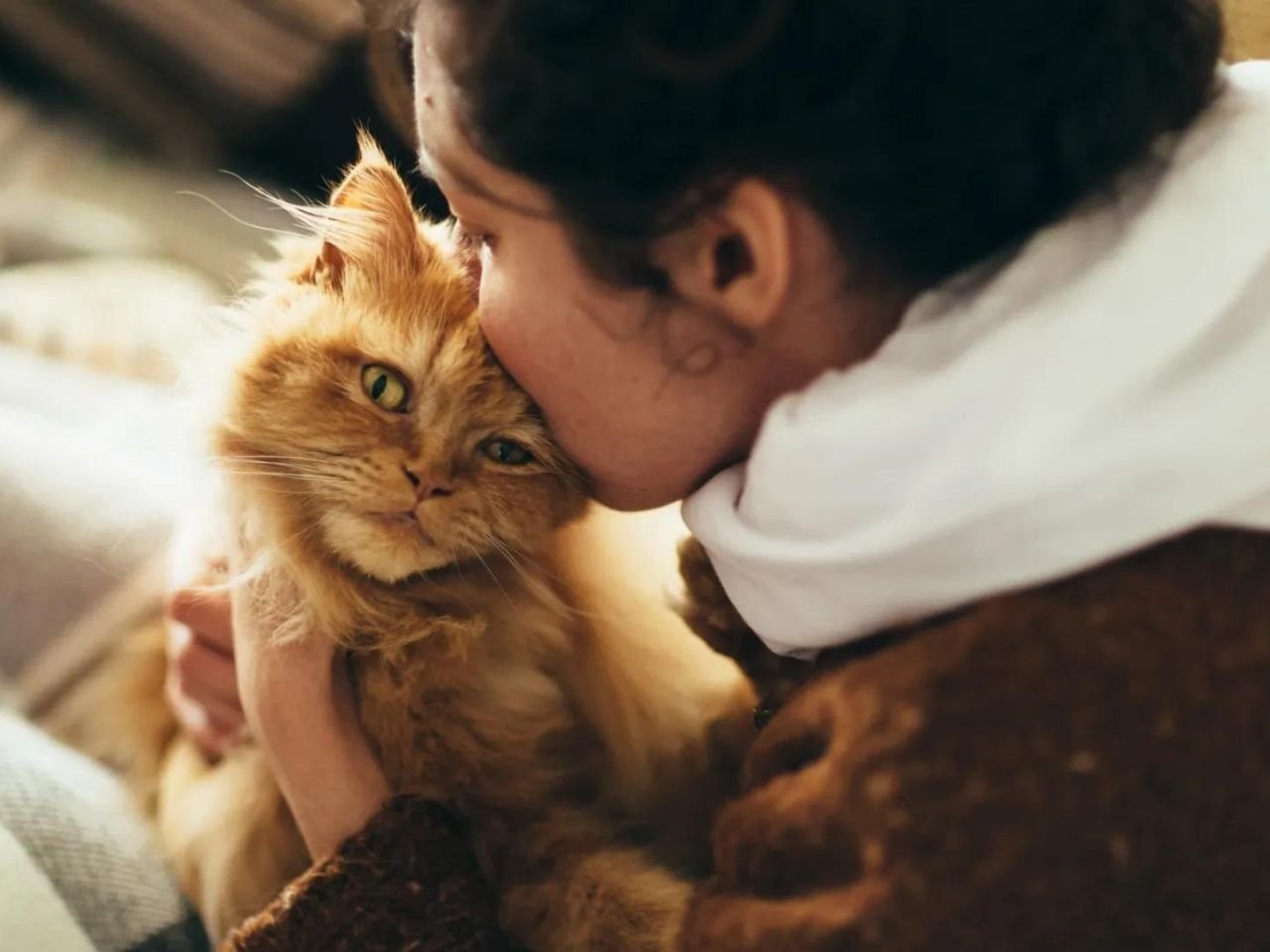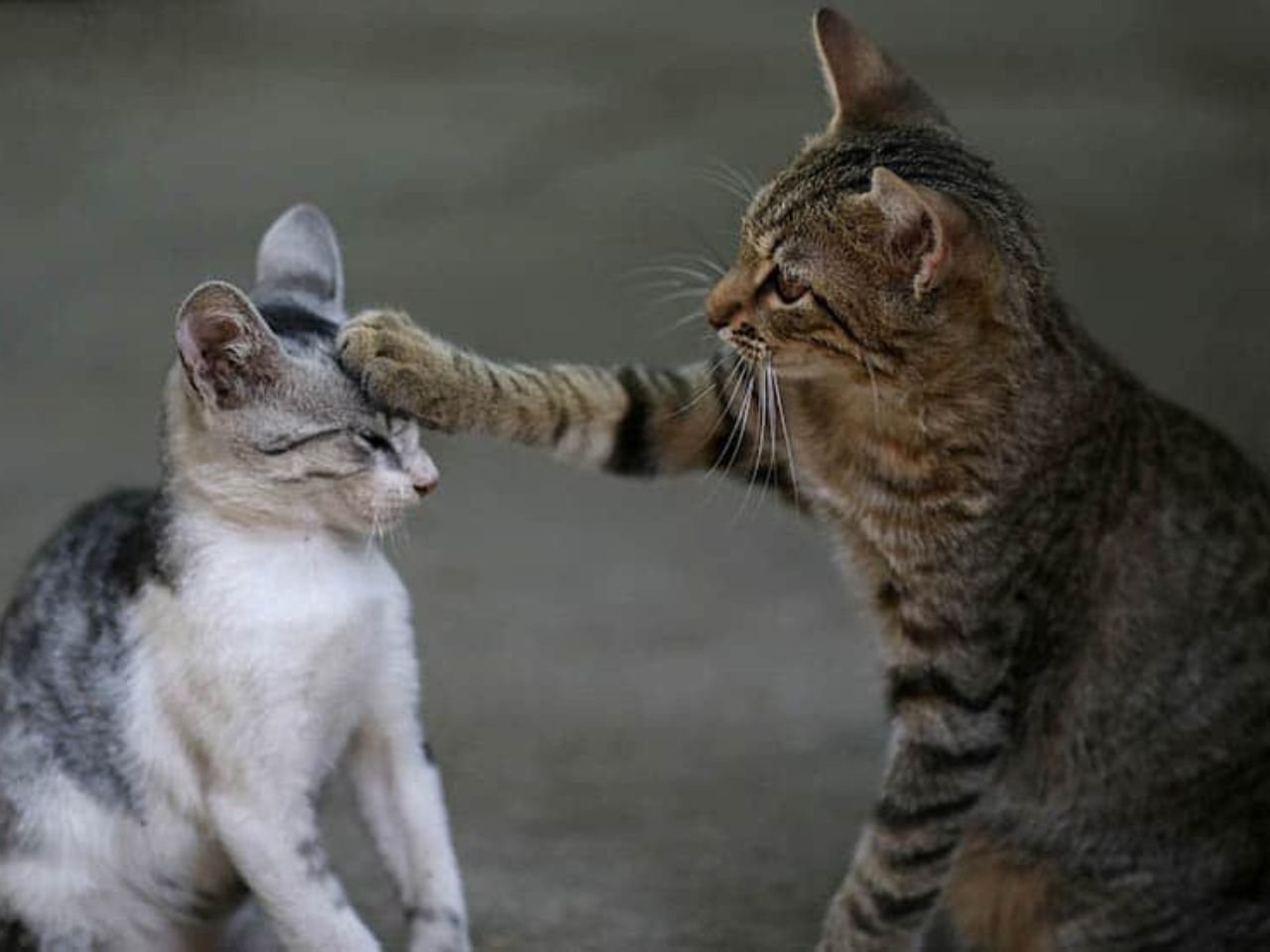Unlock How to Train an Outside Cat With Fast Cat Training! Discover quick, effective methods to train your feline friend and see results in no time.
Start by establishing a routine and using positive reinforcement. Gradually introduce your cat to the outside environment.
Training an outside cat requires patience and consistency. Begin by setting a regular feeding schedule to create a sense of routine. Use treats and praise to reinforce desired behaviors. Gradually introduce your cat to the outdoors in short, supervised sessions.
This helps them familiarize themselves with the environment while feeling safe. Ensure your cat is comfortable with their surroundings before allowing them to roam freely. Training an outside cat also involves teaching them to respond to their name and come when called. Always prioritize your cat’s safety by providing a secure outdoor space and keeping them up-to-date on vaccinations and parasite control.
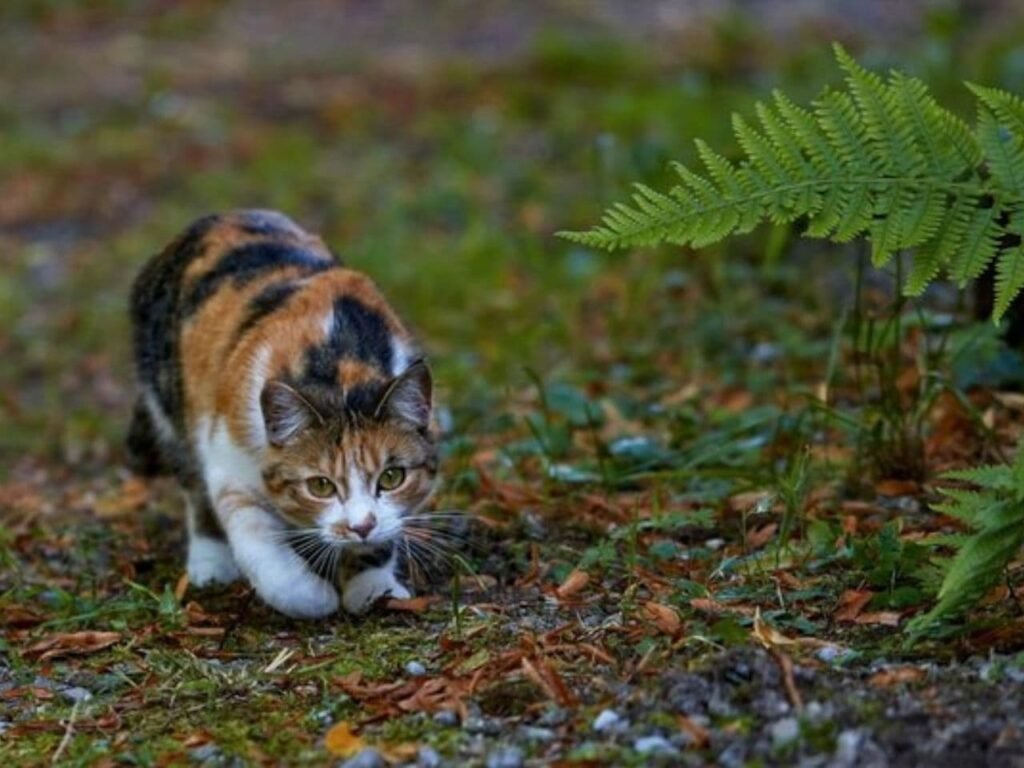
Creating A Safe Outdoor Environment
Training an outside cat requires patience and preparation. Creating a safe outdoor environment is essential for your cat’s well-being. This blog will guide you on how to train an outside cat to be an inside cat. We will cover providing shelter and fencing the area for your furry friend.
Providing Shelter
Shelter is vital for outdoor cats. It protects them from harsh weather and predators. A well-designed shelter offers warmth, safety, and comfort. Here are some tips for providing shelter:
- Insulated shelters keep your cat warm during cold months.
- Elevated shelters prevent flooding during rainy seasons.
- Weatherproof shelters protect against wind and rain.
You can purchase ready-made shelters or build your own. DIY shelters can be made from materials like wood, plastic, or even old coolers. Ensure the shelter has a small entrance to keep bigger animals out.
Here is a simple comparison of store-bought vs. DIY shelters:
| Feature | Store-Bought Shelters | DIY Shelters |
|---|---|---|
| Cost | Higher | Lower |
| Customization | Limited | Highly Customizable |
| Insulation | Varies | Can be optimized |
Comfortable bedding is also crucial. Straw or hay is a good choice as it stays dry. Avoid blankets or towels because they can retain moisture.
Fencing The Area
Fencing the area keeps your cat safe and contained. It prevents them from wandering too far and encountering dangers. Here are some options for fencing:
- Traditional wooden fences: These offer privacy and security.
- Wire mesh fences: These are affordable and easy to install.
- Electric fences: These can train your cat to stay within boundaries.
Choose a fence height that your cat cannot easily jump over. Adding an inward-facing overhang can deter climbing. Ensure the fence is buried a few inches underground to prevent digging.
Here is a quick guide to different fence types:
| Type | Pros | Cons |
|---|---|---|
| Wooden Fence | Durable, Private | Expensive, Requires Maintenance |
| Wire Mesh | Inexpensive, Easy to Install | Less Private, Can Rust |
| Electric Fence | Effective, Invisible | Needs Training, Expensive |
Regularly inspect the fence for any gaps or damages. Repairing them promptly ensures your cat remains safe. Fencing the area is a crucial step in learning how to train an outside cat to be an inside cat.
Establishing A Feeding Routine
Training an outside cat can be a rewarding experience. One of the first steps is to establish a feeding routine. This helps your cat feel secure and know when to come home. A regular feeding schedule also keeps your cat healthy and happy. Must Read How to Litter Train a Stray Cat.

Selecting The Right Food
Cats need specific nutrients to stay healthy. Choosing the right food is crucial for their well-being. Here are some tips on selecting the best food for your outside cat:
- High protein content for energy and muscle maintenance.
- Taurine is essential for heart and eye health.
- Omega-3 and Omega-6 fatty acids for a shiny coat.
Reading the labels can help you make a smart choice. Look for foods that list meat as the first ingredient. Avoid foods with a lot of fillers like corn or soy. Here is a table of what to look for and what to avoid:
| What to Look For | What to Avoid |
|---|---|
| Meat as the first ingredient | Corn or soy fillers |
| High protein content | Artificial colors or flavors |
| Essential vitamins and minerals | High carbohydrate levels |
Feeding your cat the right food helps them stay active and healthy. It also keeps their immune system strong.
Setting A Schedule
Creating a feeding schedule is just as important as selecting the right food. Cats thrive on routine and knowing when they will eat. Here are steps to set a feeding schedule:
- Feed your cat at the same time every day.
- Morning and evening feedings work best for most cats.
- Use a bell or call to signal feeding time.
Start by choosing times that fit your daily routine. Morning feedings can be done before work or school. Evening feedings can be after dinner. Consistency is key to training your cat. They will quickly learn to come home at feeding times.
Using a bell or calling your cat’s name helps them associate the sound with food. This can be very useful if your cat roams far. Over time, your cat will come running when they hear the signal. This makes it easier to keep track of your outside cat.
Remember to be patient. It may take a few days for your cat to adjust to the new routine. Stick to the schedule and your cat will soon follow it.
Also Read Our Previous Article:
Building Trust And Encouraging Socialization
Training an outside cat can be a fulfilling experience. It requires patience and consistency. Building trust and encouraging socialization are key steps in this journey. This guide will help you understand how to train your outside cat effectively.
Using Positive Reinforcement
Positive reinforcement is a powerful tool for training. It involves rewarding your cat for good behavior. This can be done using treats, petting, or verbal praise.
Here are some steps to use positive reinforcement:
- Identify the behavior you want to encourage. This could be coming when called or using a scratching post.
- Choose a reward your cat loves. This could be a favorite treat or a special toy.
- Be consistent with your rewards. Always give the reward immediately after the desired behavior.
- Use a clicker if you have one. Clickers can help mark the exact moment your cat does something good.
Positive reinforcement should be used regularly. This builds a strong connection between the behavior and the reward. Over time, your cat will start to repeat the behavior more often.
Here’s a simple table to help you track your cat’s progress:
| Date | Behavior | Reward | Notes |
|---|---|---|---|
| 01/01/2023 | Comes when called | Chicken treat | Responded quickly |
| 02/01/2023 | Uses scratching post | Catnip toy | Spent 5 minutes scratching |
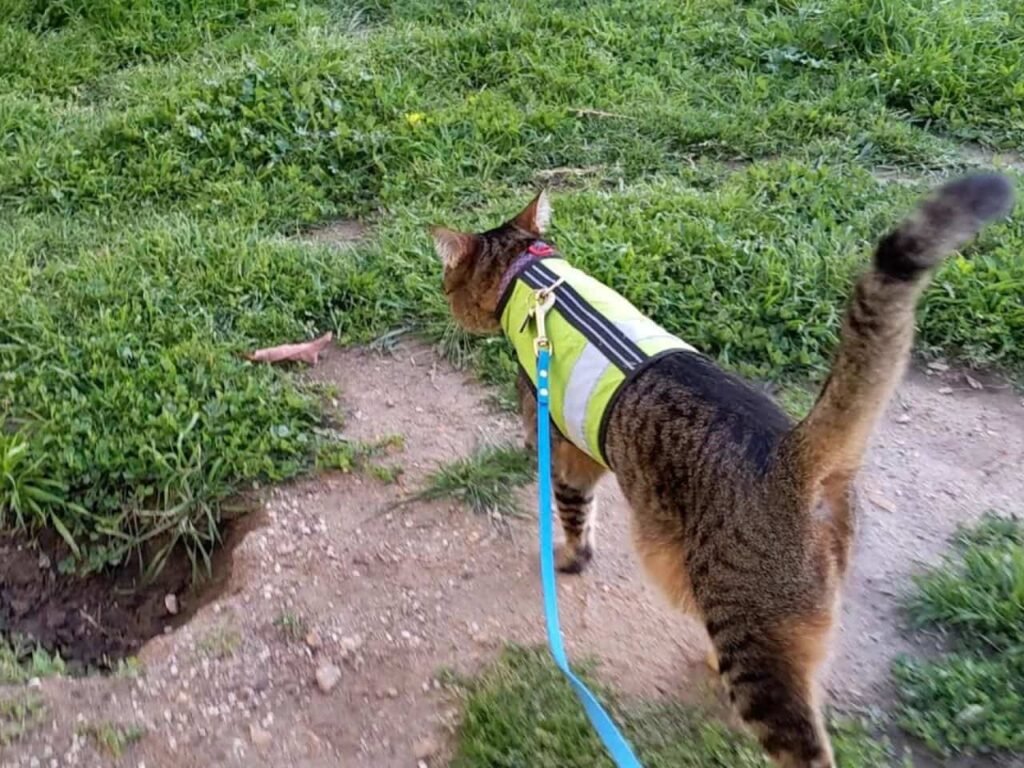
Spending Quality Time
Spending quality time with your cat is crucial. It helps build trust and encourages socialization. Here are some activities you can do together:
- Playtime: Use toys like feather wands or laser pointers.
- Grooming: Brush your cat’s fur to keep it clean and healthy.
- Exploration: Allow your cat to explore the yard under supervision.
- Feeding: Share mealtime to create a bonding moment.
Regular interaction helps your cat feel more comfortable. It also reduces stress and anxiety. Over time, your cat will become more social and trusting.
Quality time should be enjoyable for both of you. Make sure to watch your cat’s body language. If your cat seems stressed, give it some space. Positive experiences will make your cat look forward to spending time with you.
Frequently Asked Questions About How to Train an Outside Cat
How To Train A Cat To Be An Outdoor Cat?
Gradually increase your cat’s outdoor time. Supervise initial outings. Ensure vaccinations and microchips. Create a safe outdoor environment.
How Do I Train My Cat Not To Run Away Outside?
Train your cat to stay by using a harness and leash. Reward them with treats for good behavior. Create a secure outdoor space. Supervise outdoor time and gradually increase their freedom. Consistent training and positive reinforcement are key.
Can Cats Be Trained Outside?
Yes, cats can be trained outside. Use positive reinforcement and start with a secure, enclosed area. Gradually introduce them to larger spaces.
Can You Train A Cat To Stay In The Yard?
Yes, you can train a cat to stay in the yard. Use positive reinforcement and supervise outdoor time. Secure the yard with cat-proof fencing. Gradually increase outdoor time to build trust.
Training an outside cat requires patience, consistency, and love. Use positive reinforcement to encourage good behavior. Ensure your cat’s safety with regular vet visits and a secure environment. With time and effort, your cat will adapt well to outdoor life.



